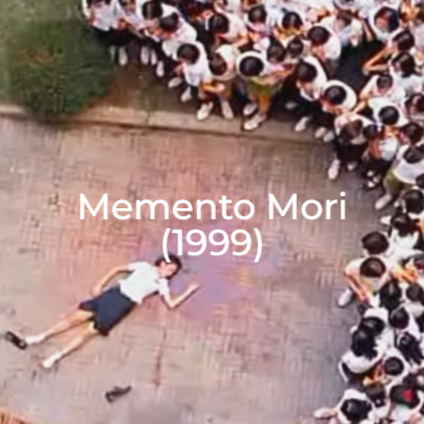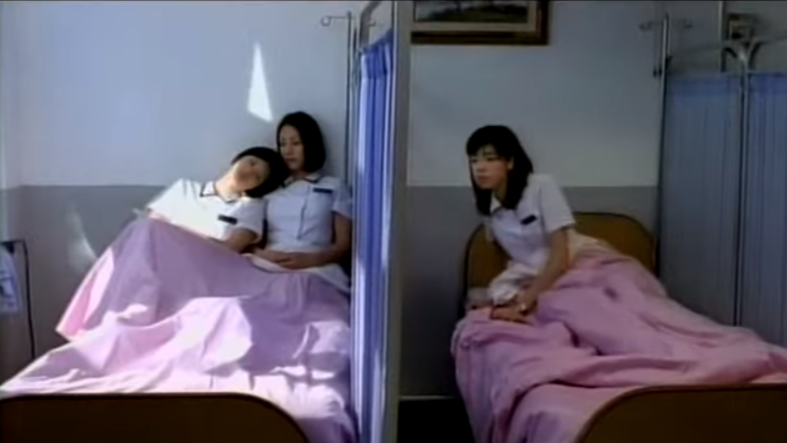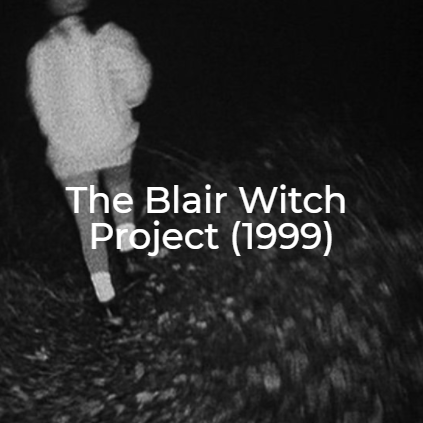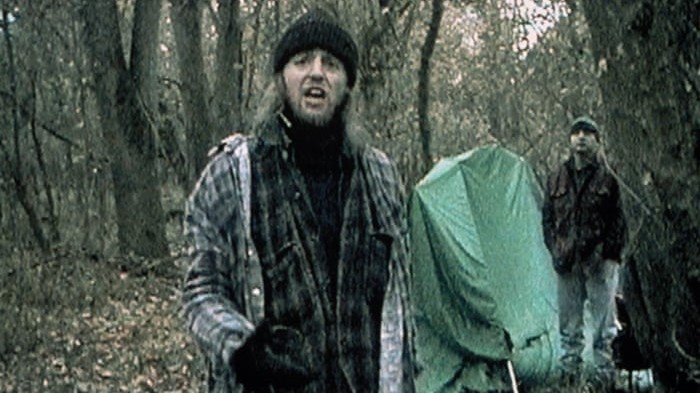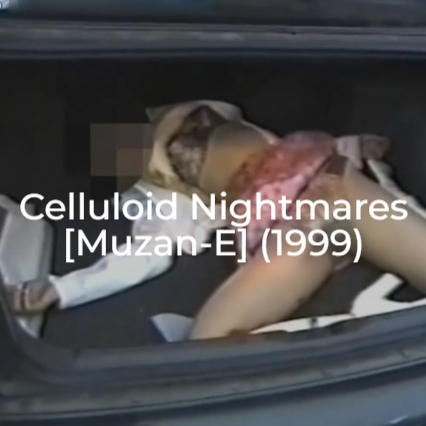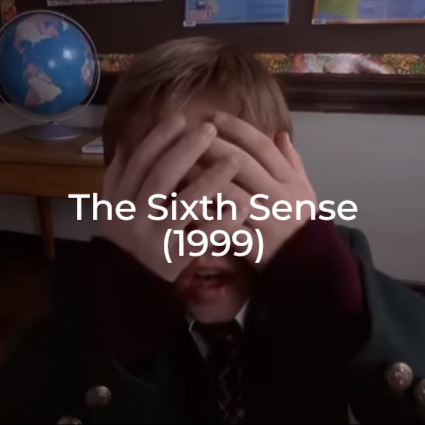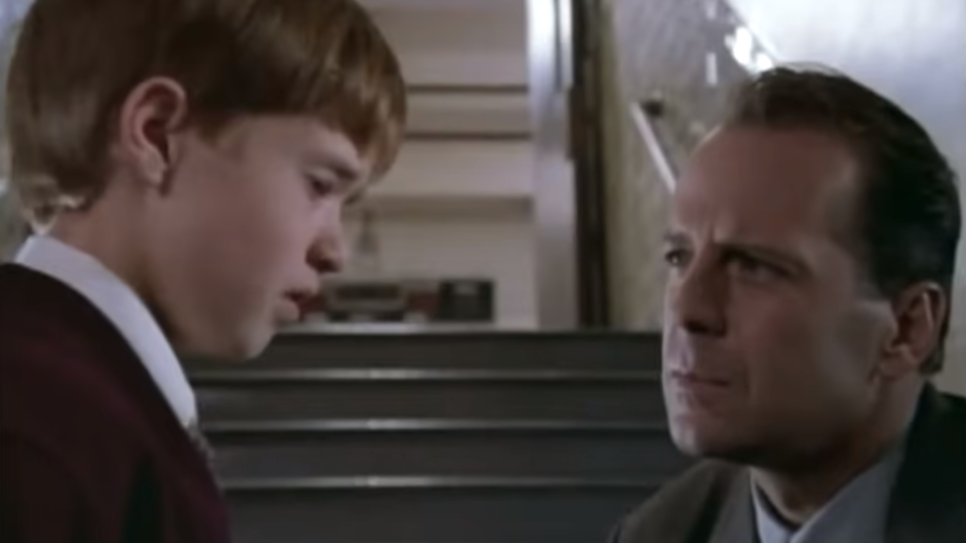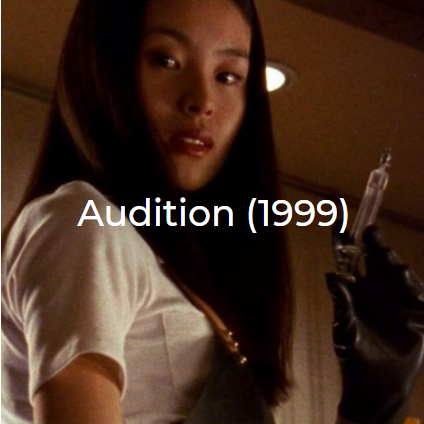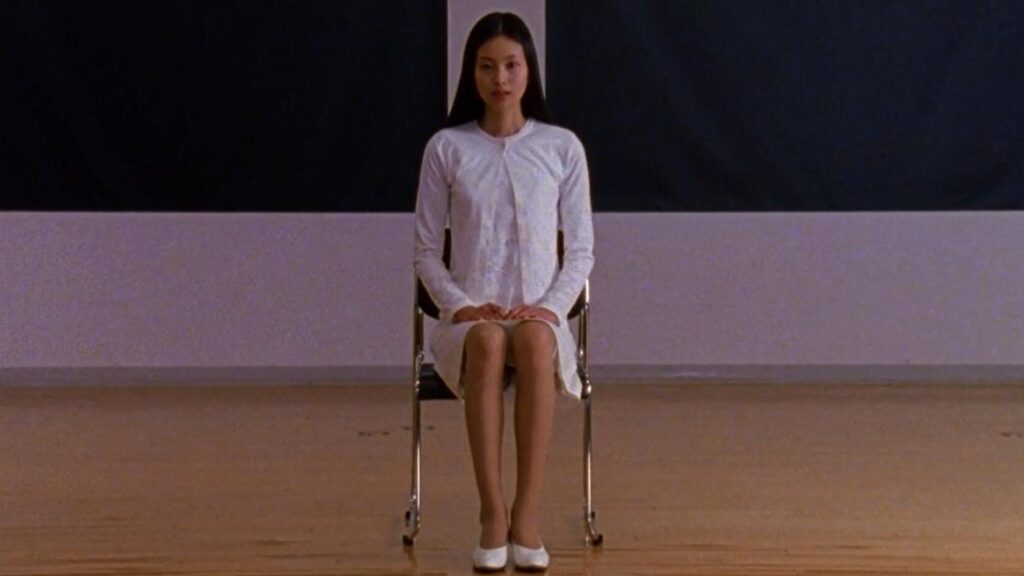The Ten Best Modern Horrors of 1999
Welcome to The Midnight Selections. Your home for the best in modern horror and extreme cinema.
In this video, we’re going to talk horror like it’s 1999.
Why 99? Is this the year when modern horror starts? Oh, Hell no. But it is a pivotal year where a lot of the trends start to take shape that push horror films into the next millennium.
So let us jump into The Midnight Selection’s Top Ten Modern Horrors of 1999.
10. The Hypnotist [Saimin]
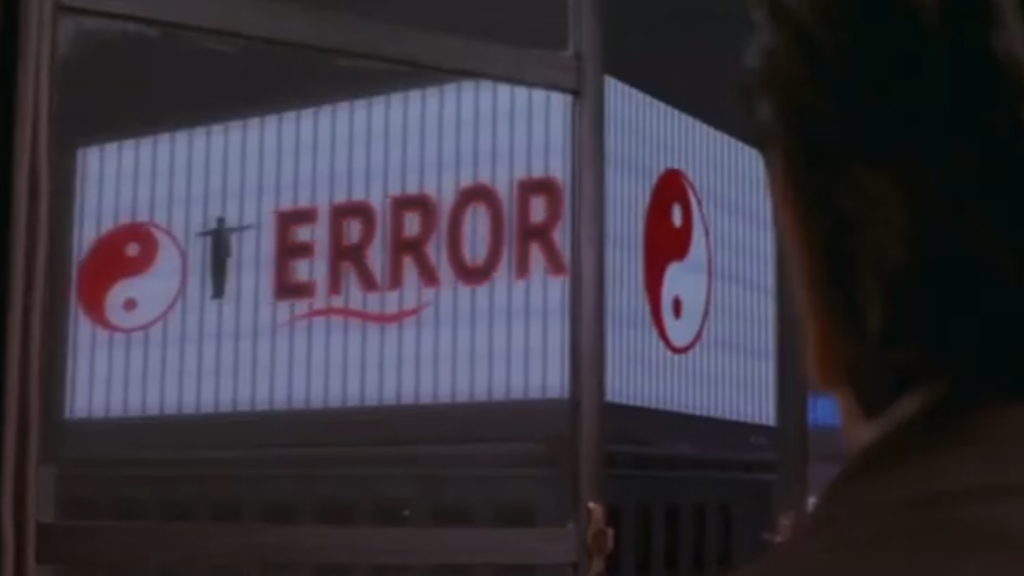
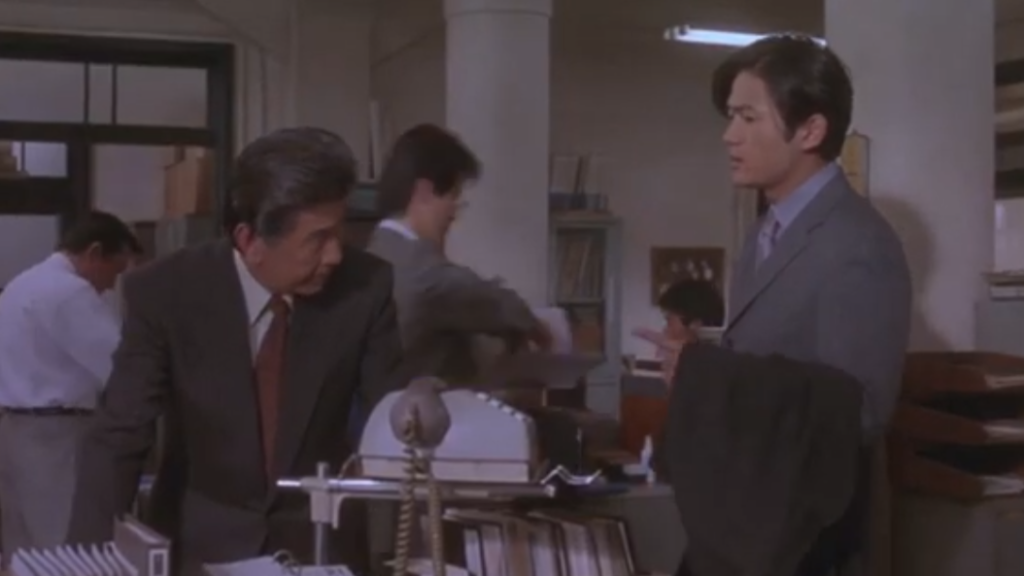
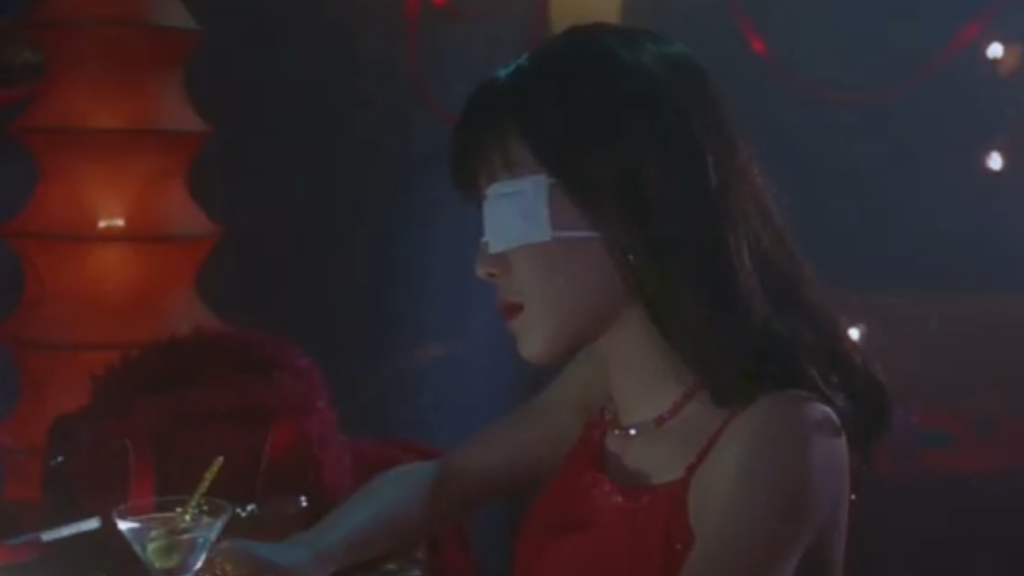
Since we’re talking 1999, I’m going to lean heavily into J-horror. But I promise, there won’t be any long hair ghost girls on this list. Awe, damn. Okay, maybe one film uses that trope…sort of. To be fair, she’s not actually dead.
1999 was a year where Western studios were trying hard to reconceptualize the horror genre and a number of big budget projects were given a greenlight. There were two star-studded remakes of old haunted house classics, and a few original titles aimed at marketing films with horror elements to a wider audience. Most of these films had plots intended to make the most of big star power, expensive set pieces and an abundance of special effects. Although I appreciate the financial risks Hollywood took making these films, they are a clear departure from the more thoughtful, atmospheric features that have become synonymous with modern horror. Today, these titles have a dedicated fanbase, but considering their cost, it’s hard to argue they ended up doing very much to push the genre forward.
At the same time- across the Pacific- films like Kiyoshi Kurosawa’s Cure and Hideo Nakata’s Ringu had inspired a new generation of Japanese directors to push the genre’s limits within the country. One example of this is Masayuki Ochiai’s Saimin which in the West is better known as The Hypnotist, or Hypnosis. The Hypnotist is a film that borrows heavily from Kurosawa’s Cure. But while Cure is a mind-bending meditation on people’s fragile perception of reality, The Hypnotist offers a more straight-forward catch-the-killer plot that leans heavily into its twists and inventive death sequences. So yeah, you can say The Hypnotist swaps out brains for more blood, but the film is very aware not to take itself too seriously.
The film’s story revolves around an investigation of a series of bizarre suicides were each the victims spoke the words “green monkey” before dying. Believing the connection to be more than pure coincidence, the lead detective speaks with a young psychiatrist who suggests that hypnosis could have been used as a trigger in each death. This sets off a man-hunt to locate the evasive Green Monkey murderer before he can find himself more victims.
The Hypnotist does not shy away from the idea of hypnosis being used as a tool to commit sexual assault and rape. Miho Kanno gives a spectacular performance as a hypnosis target of the green monkey who simultaneously suffers from dissociative identity disorder…and I’m not sure M. Night Shyamalan didn’t perhaps borrow an idea or two from this film to use in one of his later films.
At its halfway point, I was honestly considering placing The Hypnotist near the top of this list. The first two acts are great! But the film’s final act goes a little too far off the rails for my liking. From what I’ve read online, there are definitely people out there that like the final plot twists- but I am of the camp that believes there is perhaps one twist too many, so I’m happy letting The Hypnotist fall into the ten spot.
9. Gemini
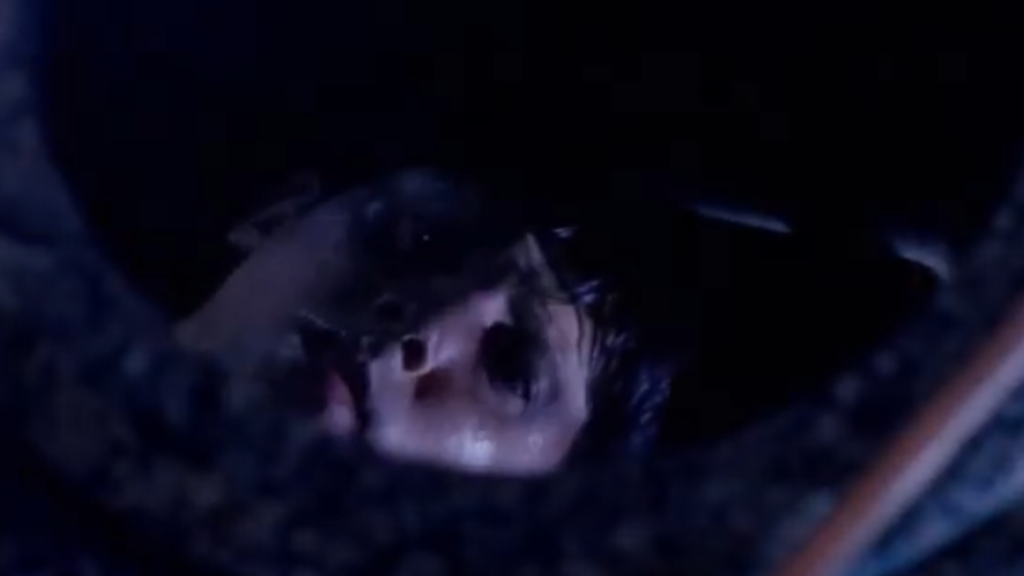
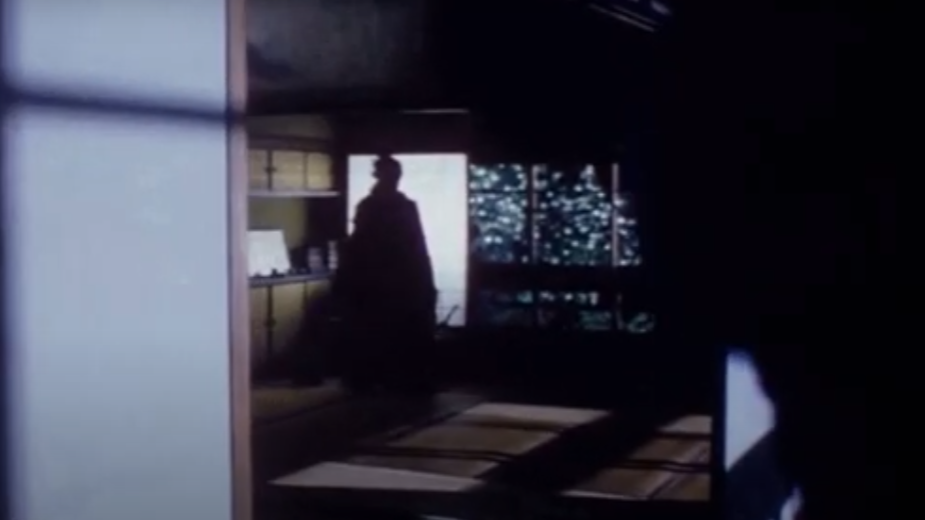
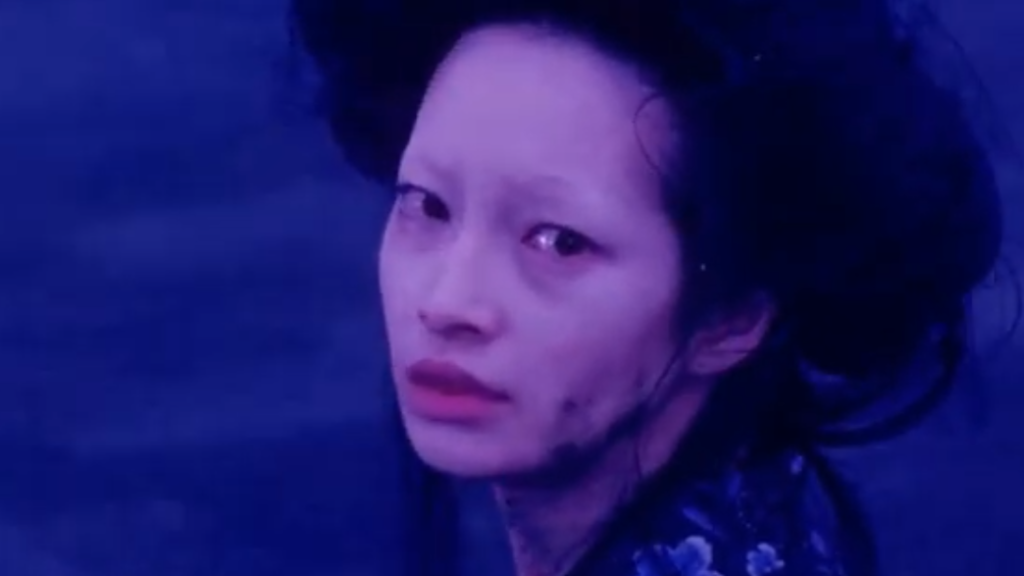
Gemini is a horror fantasy directed by Shin’ya Tsukamoto. Tsukamoto is best known for his experimental cyberpunk nightmare, Tetsuo: The Iron Man. Yeah, that film.
Tsukamoto’s films regularly involve body horror and he has a kinetic style filmmaking- and Gemini certainly has its moments of both- but compared to the films in the Tetsuo franchise, Gemini is a decidedly quieter, more lyrical affair.
Gemini tells the story of a former military doctor living in 1910 Tokyo. At the start of the film, the doctor lives with his wife, who has amnesia, and his two judgemental parents. The doctor’s life starts to unravel when a mysterious doppelganger stalks his home looking to steal his identity.
Gemini sits back at number nine because the story can be a little hard to follow at times. It is kind of an adult fairytale with lots of twists, but if you stick with it, the story will make sense- well- at least on a metaphorical level. And the cinematography is absolutely gorgeous. Many of the shots contain contrasting blue and red monochromatic colour schemes that accentuate the film’s various themes. But what really makes Gemini stand out is the way Tsukamoto challenges our expectations on who the real villain of this movie might be.
8. Ravenous
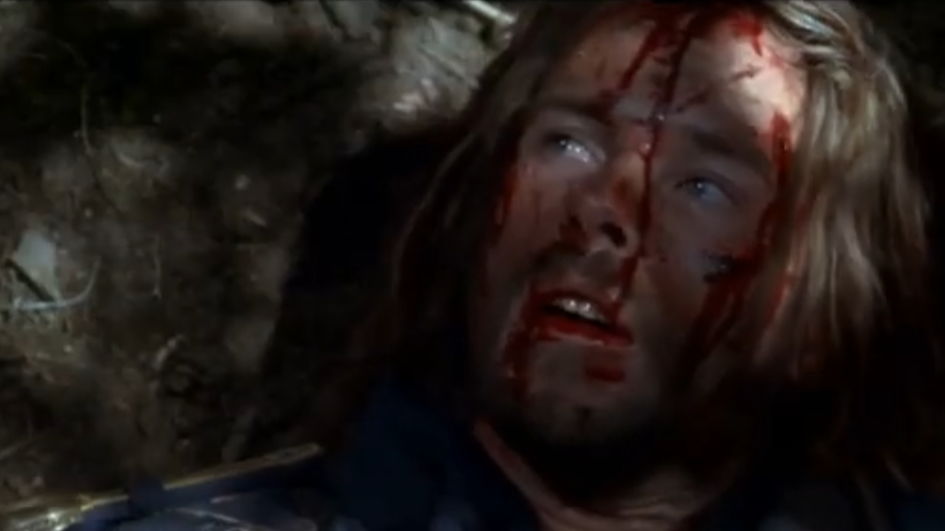
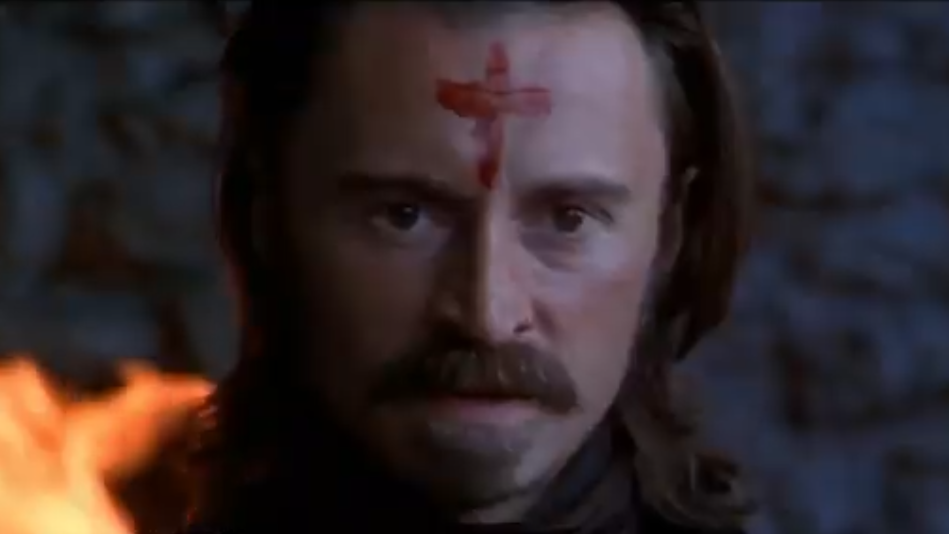
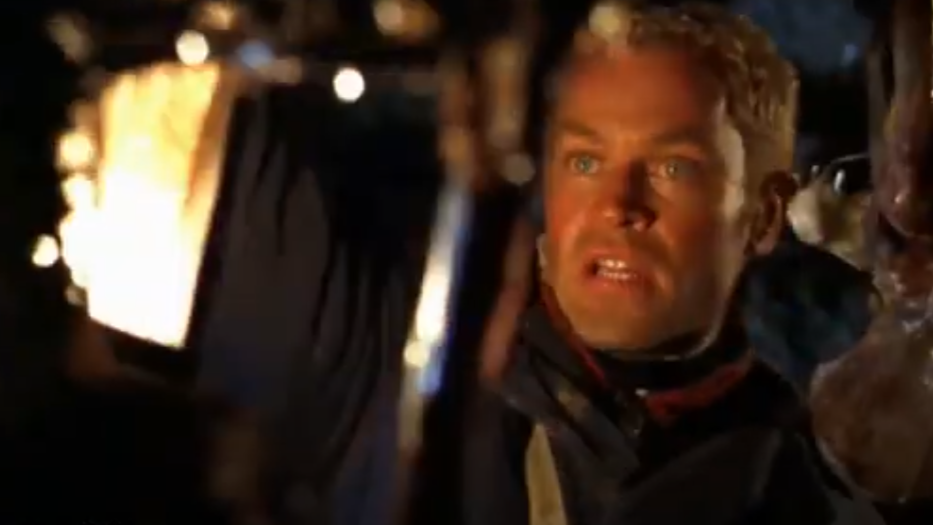
There’s no doubt that in 1999, Westerns Studios were pretty willing to take some wild risks with horror concepts and then wait to see who comes. It was an approach that ended up being extremely hit or miss at the box office and when Ravenous found its way into theaters, it flopped…but over time, the film has garnered a significant cult following.
Ravenous tells the story of an American soldier who fought in the Mexican-American War. His reputation as a war hero gets called into question and this results in him being transferred to a remote outpost in the Sierra Nevada. Soon after he arrives, a mysterious stranger shows up begging for help to save his remaining traveling companion from a Colonel who went mad after the group resorted to cannibalism to survive the winter trapped in the mountains.
Ravenous is a bit of a genre blender. It’s part Western, part cannibal horror, part comedy and part dark satire. Honestly, this really isn’t a film that should work, but it actually ends up coming together surprisingly well due to some truly inspired performances from Guy Pearce, Jeffrey Jones and Robert Carlyle.
And I won’t lie. Part of Ravenous‘s weird charm comes from how tonally awkward it can be at times. Antonia Bird is the only female director to make this top ten list, but she was also the third director brought into the project- so I wouldn’t exactly call this a Hollywood win for gender equality behind the camera. Still, she deserves credit for salvaging an already partially shot project and turning it into an extremely original dark comedy that doubles as a metaphor for how manifest destiny inevitably devoured the American frontier. And the soundtrack is like nothing I’ve ever heard before.
But if for no other reason, Ravenous makes the list because of Robert Carlyle’s portrayal of Colqhuoun- a character that is easily one of the best horror villains of 1999.
7. Red Room
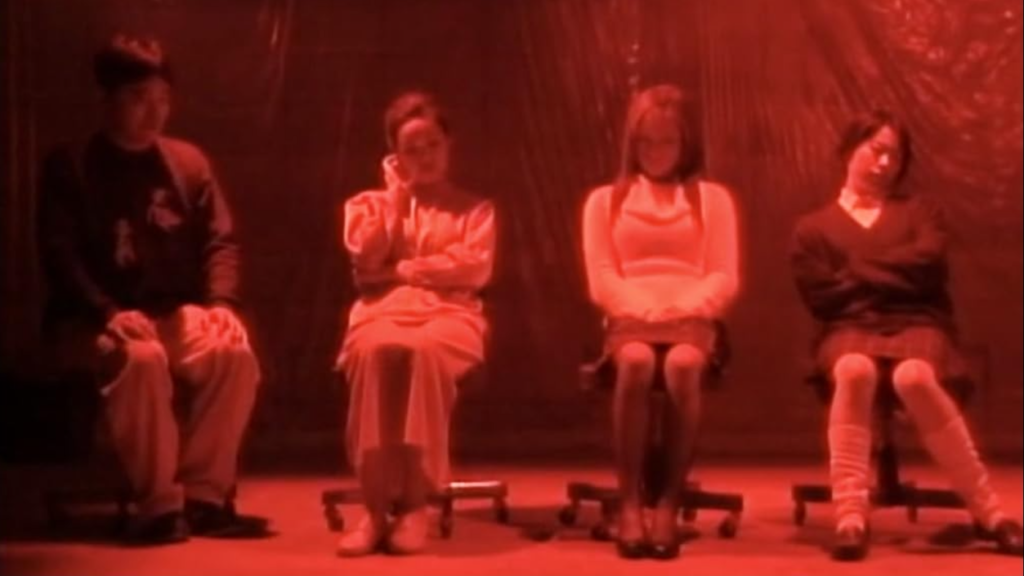
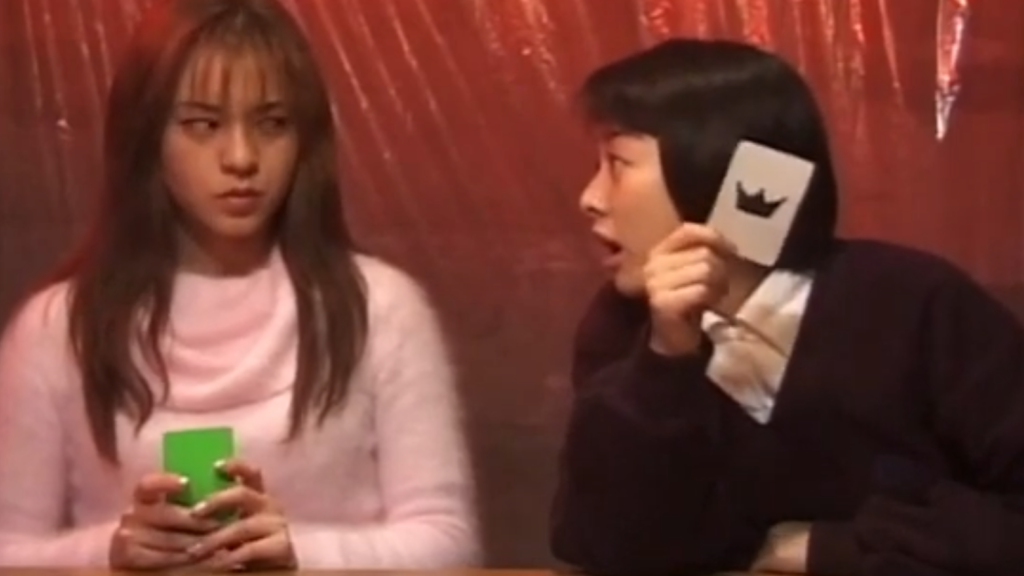
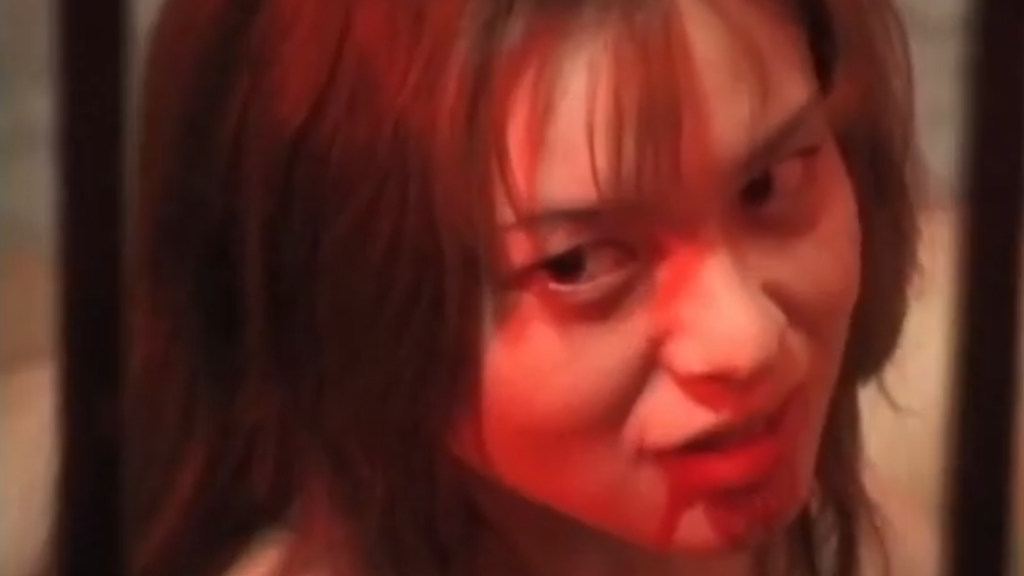
Hm. I might have some explaining to do.
The Red Room is an exploitive horror fetish porn directed by Daisuke Yamanouchi. Yeah, you heard me right.
In 1999, Yamanouchi was part of a growing list of Japanese directors making dark, direct-to-video extreme exploitation films after the success of the Guinea Pig series in the 1980’s. In fact, 1999 was kind of a banner year for Yamanouchi, who directed three films that all continue to have a significant cult following.
Now I’ll admit, Red Room is way more gross-out than gore and relies heavily on body fluids and egregious sexual acts. Watching, I only gagged twice. So why is it this list?
For one thing, its premise is significantly ahead of its time and still holds relevance. The film is about a reality show where four contestants are randomly asked to think of challenges which would make the other three forfeit their right to the 10 million yen prize. It’s kind of an early take on a Saw-style torture film that is also critical of the entertainment value in humiliation. And even though it clocks in at only 68 minutes, the film packs in a variety of creative tortures- from silly to the inevitably sadistic- that I won’t be forgetting anytime soon.
But, if I’m being honest- Red Room is also one of the only film’s on this list to make me feel genuinely emotional near its ending. Really! The film goes in some interesting directions after it’s revealed that one of the characters is transgender. Not that this depiction isn’t without problems, including the character’s stated age, but considering what the Red Room is and when it was released…well…the way this is handled could have been way more offensive. In fact, Yamanouchi actually approaches the subject with a surprising degree of sensitivity.
Look, I understand exactly what Red Room is and appreciate a filmmaker’s attempts at making something memorable despite severe budget limitations. And over the years, I’ve built up a pretty high tolerance for what can be put on the screen. So I know that this is not a film everyone- and if you’re worried Red Room isn’t a film for you, it probably isn’t. And that’s alright.
But if you want to accuse me of putting the grossest film of 99 on this list just for the sake of shock value, well believe me, I know at least one title that came out of Russia that is far, far worse.
6. The Ninth Gate
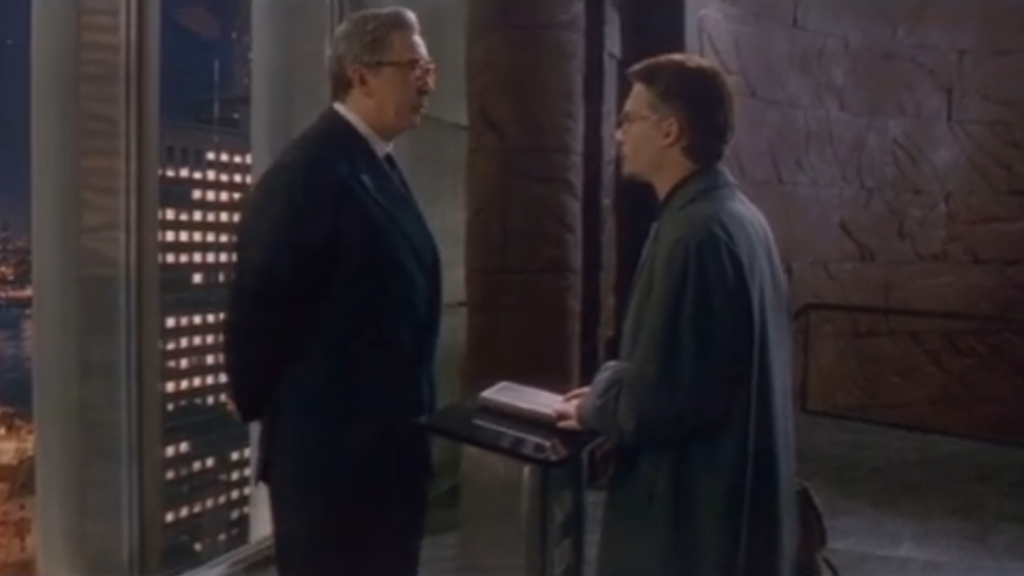
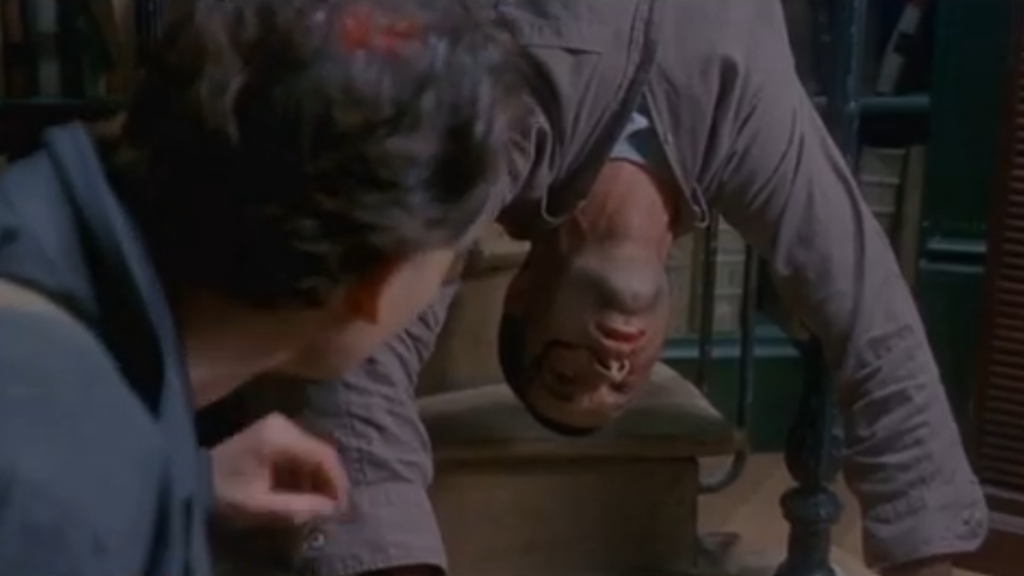
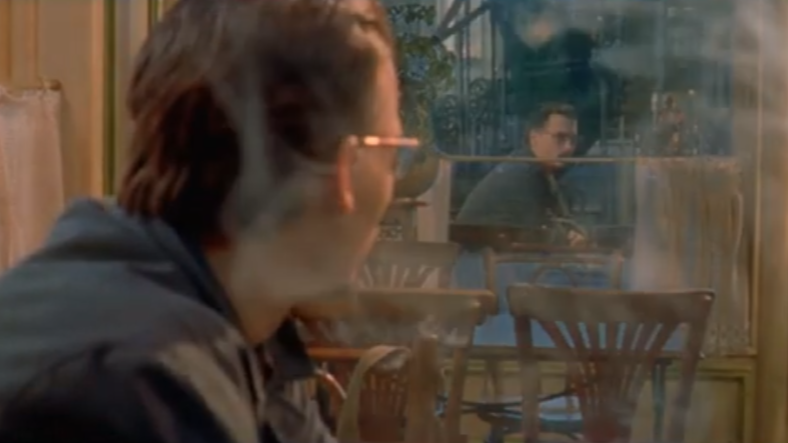
With Repulsion, Rosemary’s Baby and The Tenant, Roman Polanski solidified his position as a master of the psychological thriller. But when making a film about the search for a book that could summon the devil, he actually turned more to another style of film he had previous success dabbling in- the Neo Noir.
The Ninth Gate is a mystery involving murder, the occult, demonic interventions and engravings in three books that may have been illustrated by Lucifer himself. it may not necessarily fit some people’s definition of a horror film- but it certainly is a film that contains a lot of horror elements.
Johnny Depp plays Dean Corso, an unscrupulous book dealer with a knack for getting his hands on rare finds. He is hired by Boris Balkan, a wealthy collector of books on the occult, to locate two of the three remaining copies of The Nine Gates of the Kingdom of Shadows, a rare book believed to be co-written by Satan. But shortly after Balkin entrusts his own copy of the book to Corso, the book dealer finds his partner murdered and his own life to be in danger. So to better understand the true intentions of his benefactor, Corso starts examining the pages of the book for himself.
The Ninth Gate is very plot heavy and a lot of scenes contain little details that are easy to miss. Many people have likened the film to a riddle because of some of its designed ambiguities- but you don’t have to be intimidated by the main story- it actually is not that difficult to follow.
And the performances in this film- including that of many minor characters- are outstanding. At the time of its release, Johnny Depp surprisingly faced criticism for playing the character a bit too low-key, but I think his take on the film’s amoral anti-hero is spot on. Like the film itself, his character and his goals are every bit an enigma.
Look, I’m not one to obsess about a single movie, but The Ninth Gate certainly is a film that some people repeatedly view hoping to validate deeper religious or occult interpretations. And though I’m happy with my original thoughts on the movie, I still recommend reading some of the better developed theories out there after you give this one a watch. There are a lot of people who have some pretty convincing arguments that can make you see the film in new and interesting ways.
5. Whispering Corridors 2
Memento Mori
In 1998, the original Whispering Corridors film was more than just a supernatural horror set in an all girls school. It also stirred up a lot of controversy in South Korea for its critical depiction of the use of corporal punishment inside the classroom. But despite the Korean Educational Board’s failed efforts at having the film banned, it would go on to be the third highest grossing title in South Korea that year and helped to revive the horror genre within the country.
So came the rush for a follow-up film, set in a different all-girls school- telling a different supernatural tale of a vengeful ghost. But it turns out that Kim Tar-young and Min Kyu-dong- the two directors they hired to write and film it- were way more inspired by the social critique aspects of the original Whispering Corridors than they were in its ghost story. In fact, part of what makes Memento Mori unique is how hard the directors work to not have a long haired ghost girl in their film- at least not in any way that obviously caters to the convention.
Of course, this has kind of made Memento Mori a bit of an outlier amongst fans of the franchise- which currently has six films to its name. But depending on who you ask, Memento Mori is either the worst movie in the franchise, or the only one that is even better than the original. Then again, Memento Mori directors haven’t exactly embraced the Whispering Corridors name either. Some of the re-releases have even tried to do away with the franchise’s name entirely.
Memento Mori‘s main story is focused around the shared diary of two gay students that gets discovered by another classmate. The girl who reads the diary learns that their relationship had a tragic ending and then, in real-time, witnesses things between them get even worse. However, the film’s fly-on-wall approach also allows it to cover a whole range of issues that deal with body shaming, homophobia, teen pregnancy, teen suicide, physically and sexually abusive teachers, and I’m pretty sure one girl is just plain psychotic. It’s actually pretty amazing that the film can pack in so much without any of it feeling forced.
In fact, you have to wait until the second half of Memento Mori for a ghost to even show up. That’s when the film slowly transforms itself into an odd, surreal nightmare with strong psychological undertones. And frankly, Memento Mori has one of the best examples of possession being used as a metaphor since…well…Andzej Zulawski’s Possession
Memento Mori is not always an easy film to follow because of its use of a disjointed timeline. You may need to take the time to rewatch a few parts, but the story will come together- that is at least until some of its logic implodes in those final few minutes. And even that ends up being fitting in a film essentially puts you inside the head of a confused, adolescent girl.
The Blair Witch Project
The Blair Witch Project was not the first found footage horror ever made, but it was the first good one to be shown internationally that employed the technique throughout the entire duration of its run-time. Until it came along, previous attempts at found footage horror were mostly niche films shown in festivals and some of the better known early titles, like Cannibal Holocaust and Celluloid Nightmares, only really contain found footage segments that last about a third of their total run-time.
The Blair Witch Project is also famous for essentially Ghostwatch-ing a lot of the viewers at its Sundance premiere into believing its main characters were real-life victims of a supernatural being that lurked somewhere within the State of Maryland. And truth be told, it even managed to trick a few people afterwards too.
Directors Daniel Myrick and Eduardo Sánchez deserve a lot of credit for bringing the found footage genre into the mainstream- and doing so for under $60,000. There is no doubt that this film helped inspire a whole generation of young filmmakers to view horror as an achievable genre to launch their careers.
The Blair Witch Project is a pseudo-documentary that is claimed to be spliced together using footage that was found in the forest where three documentary crew members went missing. You gotta have some respect for that simple, yet effectively foreboding title card.
Heather, the brains behind this documentary project, assembles a crew to help her make a film about a witch whose legend dates back to 1785- a time when the present town of Burkettsville was called Blair. At first they talk to locals, but the stories they get of weird happenings throughout the year are conflicting. Then they enter the forest themselves to see the areas where a lot of the strange things occurred. The original plan is to stay for three nights. Hmmm. I wonder what went wrong?
The unseen presence of a witch certainly brings a supernatural element into the film, but scares in the The Blair Witch Project actually work more on a psychological level, requiring audiences to use their imagination to fill in some of the blanks about what is happening off screen. But it’s the film’s final frames that deliver a gut-punch that is one of the creepiest in any horror.
But what really makes The Blair Witch Project special is how authentic the whole experience feels. The three actors involved deserve recognition for delivering performances that were convincing enough to fool a good number of people into believing that a Blair Witch might really be out there. An actress Heather Donahue, who probably shouldn’t have used her real name in the movie, delivers one of the most iconic monologues in all of cinema.
And even though an impressive, but equally misleading, marketing campaign helped to catapult The Blair Witch Project to popularity- the truth is that many people still flocked to see the film after its based-on-a-true-story claims were long discredited. And look, if I was ranking films solely in terms of their influence on the horror genre, The Blair Witch Project would be ranked number one. But I was around when this film was released and like many who saw it in theaters, I couldn’t help but feel like Myrick and Sánchez left some meat on the bone with this one. Despite its legacy, The Blair Witch Project remains a pretty divisive film that has lost a little of its shine over the years to later found footage entries that were more willing to place the horror in front of the camera. So, I feel pretty good about slotting this one in at number 4.
3. Celluloid Nightmates [Muzan-E]
Muzan-E , which is better known as Celluloid Nightmares in the West, is an extreme exploitation film directed by Daisuke Yamanouchi- you know, the guy who brought us Red Room.
Yamanouchi was in peak form in 1999 and Celluloid Nightmares is easily the best film of the lot. If, like me, you’re the kind of person who wondered what the Poughkeepsie Tapes might have been had the nastiness been taken up a notch, then yeah…you’re probably going to like this one.
But this pick comes with a warning. Like Red Room, Celluloid Nightmares is a mature, adult horror with graphic sexual content. The film has a 18+ rating…so you’ll have to decide for yourself whether it’s a film for you.
Celluloid Nightmares is a pseudo-documentary about a small crew making a true crime video on the disappearance of Mia Tsurumi, a popular Japanese porn star. Tsurumi became popular in fetish porn circles specifically for her work in menstrual porn, which Yamanouchi shows us to be every bit as gross as it sounds. But if you can manage to stomach it, you may recognize the tinge of extremely self-aware dark humour embedded within these scenes.
The documentary crew talk with those who had last worked with the missing actress and explore a rumour about a snuff tape that supposedly exists showing she was actually brutally murdered .
Turns out- the tape is real and, of course, the documentary crew will eventually get their hands on a copy. And when faced with the ethical dilemma of whether they should make the footage from that tape public…well…of course they’re going to show it.
It’s worth noting that Celluloid Nightmares was also incorporating found footage into its story around the same time The Blair Witch Project came out. And today it’s pretty common to label all pseudo-documentaries as a spin-off of found footage, so I guess it can be argued that Celluloid Nightmares is actually a found footage film right from the start. But unlike The Blair Witch Project, Yamanouchi is very willing to put all kinds of horrible and disgusting things in front of the camera- making us partially implicit in all the awfulness we see. The connection between porn and snuff is intentional and the film contains a powerful message about our complacency with the content we consume. And some of the film’s more meta-aspects, especially towards the ending, remind me of another Japanese title that would again catch viewers off-guard 18 years later.
Celluloid Nightmares is definitely a depraved film, but it is also a film that is smarter than it has any right to be. Yamanouchi is very aware that the best extreme films have elements of dark humour ingrained within their most contentious sequences- and this is largely why Celluloid Nightmares is considered by many to be an extreme horror masterpiece.
2. The Sixth Sense
In 1999, The Sixth Sense was not the only film that had a child that could talk to dead people.
To tell the truth, I had a hard time leaving Stir of Echoes off this list- but the plot surrounding its mystery can feel a bit sluggish as viewers wait for the film’s characters to catch up with what most have already figured out. And this problem is made worse by exposition drops that don’t really add anything to the overall story. So I have my reasons for not including it.
Still, I feel like David Koepp’s Stir of Echoes deserves to be given a special mention because there are moments that are genuinely frightening and it is willing to go into some dark places- including its depiction of a rape- though to be honest- that seems to be a reoccurring thing in 1999. Plus, those hypnosis theater scenes are extremely well done. I actually saw Stir of Echoes in theaters when it was released and I won’t get in the way of anyone who wants to call it a hidden gem.
But the main problem with Stir of Echoes, which unfortunately was even more obvious at the time of its release, is that so many aspects of the film are done better by that other film about seeing dead people. And that one found its way into the theaters first…if only by a few months. The Sixth Sense hits every bit as hard with scares, while managing to be much more atmospheric. It also has the kind of performances that earn Oscar nominations. Of course, there’s that one line that nobody forgets…and that ending. Ah, poor Stir of Echoes never stood a chance.
But yeah…Stir of Echoes is a pretty good watch too.
The Sixth Sense is a film about a troubled boy whose case is taken by an equally troubled psychiatrist. The psychiatrist, Malcolm Crowe, is returning to work after a horrible incident with a former patient who committed suicide in front of him. Crowe sees that a lot of his former patient’s symptoms are exhibited by the boy and starts to view the case as a way of redeeming his past failure. But what ails the boy eludes him…that is…until he builds up enough trust to learn the boy’s horrible secret. The boy says that he communicates with ghosts, but he’s just a child, and those nasty spirits he sees just won’t go away. Worst still, some of them seem to have really bad intentions.
The Sixth Sense is the film that made the phrase “pulled a Shyamalan” a thing. Before director M. Night Shyamalan decided to make twist endings his gimmick, he delivered his best one.
Personally, I wish Shyamalan would have tried more to replicate some other aspects of The Sixth Sense instead…like the throwback vibe to the great supernatural psychological thrillers of the past. The late nineties was a time when horror was still trying to find its way after over a decade of slashers caused fatigue to set in. By taking inspiration from the best supernatural horrors of the 1960s, 70s and 80s, Shyamalan showed the studios that one path forward could come by taking a closer examination of what really made those classics truly great.
And you could tell watching this film that all of the actors involved believed in this project. Bruce Willis even risked taking a huge pay cut to play his role, tying the size of his check to the film’s box office revenue. Turned out to be a solid investment. And yeah, Willis is fine, but really- it’s a young Haley Joel Osment that steals the show.
Look. I know The Sixth Sense is always going to be remembered for its ending. But for me, what makes this film so memorable is watching Osment’s pitch-perfect performance as the tortured Cole Sear. The young protagonist starts the film behaving believably schizophrenic, only to then have Shyamalan cleverly show us very rational reasons for all his actions.The Sixth Sense is just another reminder that when done right, horror can be a fantastic vehicle to explore the stigma of mental illness. Young Cole’s life is a psychological hellscape, but watching him try to adapt in a world that can’t see or truly understand his fear is what makes The Sixth Sense an experience to remember.
1. Audition
I can’t think of any film from the 90’s that served as better a harbinger for the more mature, often graphic content that would come at the turn of the millennium than Takashi Miike’s Audition– with maybe the possible exception of Michael Haneke’s Funny Games. Only Haneke’s film was actually intended as an admonishment of graphic violence in film, so he keeps his most brutal moments off screen. Miike, in contrast, is usually willing to show us as much as his budget allows.
Audition is a film that seemed to predict the coming focus on human horrors that will be at the center of the New French Extremity movement in the coming decade. This is a movie that helped bring extreme film elements to a wider audience, conditioning us for the most provocative, controversial films by directors like Sion Sono, Lars von Trier and Gaspar Noé.
And full disclosure. If I was making a list of the top horror films of all time, Audition would probably be on it. There is a reason that Audition always enters into conversations about the best J-horrors even though it always sticks out as the one that does not deal with the supernatural and that never inspired an inferior American remake.
But it’s also a film whose reputation of being disgusting is admittedly overhyped…unless you have a fear of needles. Like The Sixth Sense, Audition’s brilliant, but devastating ending, might be a bit of a disservice to how truly great the rest of the film is.
The story is about Aoyama, a widower who- after seven years of raising his son as a single father- confesses to a friend in the film industry that he would like to remarry. The friend, Yoshikawa, suggests letting him help by holding an audition for a bogus project as a chance for Aoyama to meet some women.
Pretending to be a casting director, Aoyama chooses 30 woman to audition, but before the audition even begins, he already has his mind set on a 24 year old woman named Asami who included in her resume a harrowing letter about how she was forced to give up on her dream of becoming a ballerina after a career ending injury.
Although the set up of Audition screams of masculine entitlement and abuses in power, the film actually starts off like it is going to gloss over these issues by taking a lighter tone similar to that in a lot of romantic comedies. At least one girl auditioning even gets naked for the two men, yet the way the whole audition sequence plays out suggests the two are going to get away with the ruse without consequences. That is, of course, before Asami arrives.
Turns out that there’s something about Asami that bothers Yoshikawa, but an infatuated Aoyama insists that she is the one. And when he gives her a call, she says she would be happy to meet with him. Of course, Aoyama has no idea what he just set in motion.
Audition is a masterclass at slowly building tension with its patient storytelling and wonderfully creepy imagery. The film is clearly a rebuke of patriarchal privilege in Japanese society- but it does so in a way that is complex instead of smug and sanctimonious. For all of Aoyama’s sins, he still comes across as a genuinely decent guy that doesn’t deserve what is coming. And Yoshikawa, whose attitude is arguably even more misogynistic, ends up being the one who is ultimately right.
But there is also a sense of poetic justice in Asami’s actions, as her troubled past gives a semi-justified motivation to her crimes. And I say semi-justified because…well…she is still a psychopath. But her victims are not chosen at random. And this added layer to her character has helped make Asami one of the most iconic horror villains of 1999. In fact, I’ve seen people cosplay as her at festivals.
But to truly understand Audition, you have to try to make sense of Aoyama’s hallucinations and dreams. The film, at its core, is really just a psychological dissection of a man who hides feelings of guilt and shame that are extremely relatable- even decades after it premiered.
And this makes Audition my pick at number one.
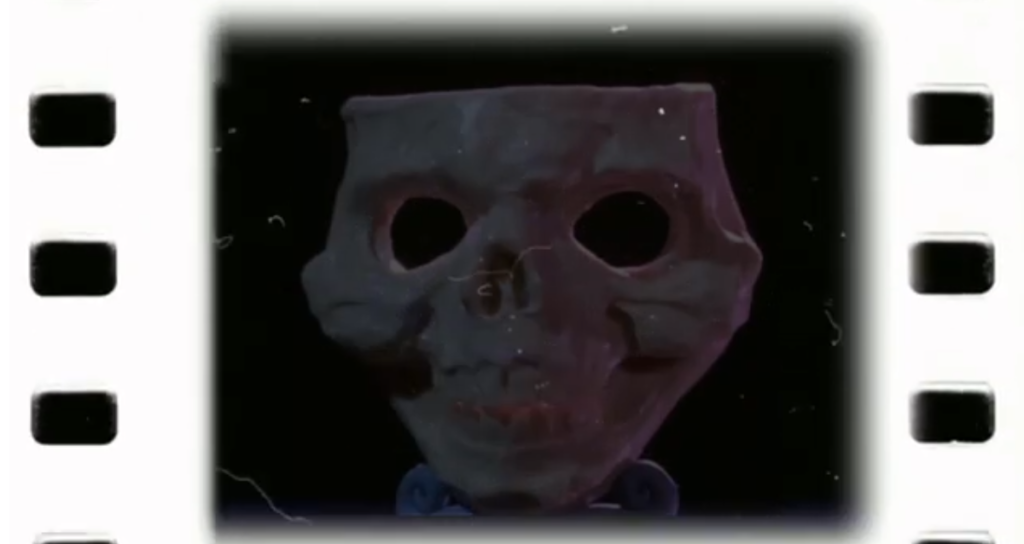
So there you have it. 1999’s got adult horror fantasy, some found footage, a throwback to the supernatural thriller, some ambiguous or shock endings and plenty of torture- all trends that would take us into the coming decades.
What 1999 doesn’t have is a lot of scares. I mean, it’s not a great sign when what is often considered the year’s scariest film actually contains no scares at all.
But perhaps I’m wrong. I know I didn’t pick the scariest films for this list, but that’s because I didn’t find 99 to have films that were all that scary. This is a year that is better defined as bizarre…and fun. And you can’t really accuse directors this year of playing it safe.
Yeah…the lists from other years will definitely have more frights. Promise.
Still, I encourage people in the comments to come up with competing lists…maybe even ones for the scariest films of 1999. Maybe I’m missing something.
Let me know what you think?
Until next time- just remember that there are great modern horrors everywhere… you just have to know where to look.
